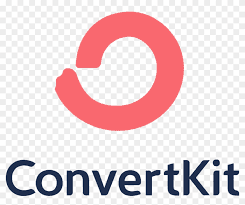In the digital marketing world, where every click is a potential customer and every visitor a lead, choosing the right landing page tool can feel like navigating a maze. Two names often emerge as beacons through the fog: Unbounce, with its powerful customization capabilities, and ConvertKit Landing Pages, known for its simplicity and integration with email marketing. But which one is the lighthouse guiding you to conversion success? Let’s dive into their usability and design flexibility to help you find your way.
| Unbounce | ConvertKit Landing Pages |
|---|---|
 |  |
| G2 Score – 4.4 out of 5 stars | G2 Score – 4.4 out of 5 stars |
| TrustRadius Score – 7.1/10 | TrustRadius Score – 8.8/10 |
Usability and Design Flexibility
Crafting Your Digital Masterpiece
A landing page’s success hinges not just on the information it conveys but on how it engages and converts visitors. This journey begins with a tool that offers the perfect blend of ease of use and creative freedom. Here’s how Unbounce and ConvertKit stack up.
Unbounce: Unleashing Creativity with Ease
Unbounce is a powerhouse in the landing page arena, renowned for its drag-and-drop builder that makes page creation a breeze for marketers and designers alike. But don’t let its user-friendly interface fool you; Unbounce offers deep customization options that allow you to tweak every pixel to perfection. Whether you’re starting from a blank canvas or opting for one of their conversion-optimized templates, Unbounce gives you the keys to a kingdom of design possibilities.
Beyond aesthetics, Unbounce is equipped with features like Dynamic Text Replacement and A/B testing, enabling you to tailor content to your audience and scientifically determine which elements drive conversions. This combination of usability and advanced functionality makes Unbounce a go-to for those looking to create landing pages that not only look great but perform exceptionally.
ConvertKit Landing Pages: Simplifying Design for Marketers
ConvertKit approaches landing page design with a different philosophy, emphasizing simplicity and efficiency. Ideal for bloggers, authors, and online creators, ConvertKit Landing Pages offers a straightforward editor that lets you quickly assemble pages designed to build your audience and grow your email list. With a selection of templates focused on conversions, ConvertKit allows you to create beautiful landing pages without getting bogged down in design complexities.
While ConvertKit may not offer the same level of design customization as Unbounce, its strength lies in its seamless integration with ConvertKit’s email marketing platform. This integration makes it easy to capture leads and kickstart email sequences, providing a streamlined workflow for users who prioritize content creation and list building over intricate design details.
Conversion Optimization Features
The Heartbeat of Successful Campaigns
At the core of any digital marketing strategy is the goal to convert visitors into leads, customers, or subscribers. Both Unbounce and ConvertKit understand this, offering a range of features designed to optimize for conversions. However, their approaches and the depth of their offerings in this area differ, reflecting their unique strengths and target audiences.
Unbounce: A Data-Driven Path to Conversion Mastery
Unbounce has positioned itself as a leader in the landing page space, largely due to its robust suite of conversion optimization features. Central to Unbounce’s approach is the belief that data and experimentation drive success. This is embodied in their comprehensive A/B testing feature, which allows marketers to create variations of their landing pages to test different elements against each other. This functionality is not just about changing colors or button placement; it’s a powerful way to understand what resonates with your audience, based on real-world data.
Dynamic Text Replacement (DTR) further enhances the platform’s optimization capabilities. This feature dynamically alters the content on landing pages to match the search terms or other criteria of the visitor. The result is a more personalized experience for each visitor, which can significantly increase engagement and conversion rates. This level of personalization ensures that the messaging is highly relevant and tailored to each visitor’s needs and interests, making the path to conversion smoother and more intuitive.
Moreover, Unbounce doesn’t just provide the tools for optimization; it ensures users can measure their impact through detailed analytics and insights. Understanding visitor behavior, conversion paths, and the overall effectiveness of different elements on the page is crucial for ongoing optimization efforts. This data-driven approach allows marketers to continually refine and improve their landing pages, ensuring they’re optimized for maximum conversion potential.
ConvertKit Landing Pages: Streamlining Conversion Optimization for Creators
ConvertKit approaches conversion optimization with a focus on simplicity and efficiency, reflective of its broader ethos of empowering creators. While it may not offer the depth of testing and personalization features found in Unbounce, ConvertKit provides key tools needed to create effective landing pages. The platform simplifies the optimization process, focusing on elements that directly contribute to growing an audience and nurturing leads.
The strength of ConvertKit Landing Pages lies in its seamless integration with ConvertKit’s email marketing platform. This integration allows for the easy addition of sign-up forms and call-to-action (CTA) buttons that feed directly into email campaigns. The ability to capture leads and immediately engage them with targeted email sequences is a streamlined path to conversion, especially for users whose primary goal is to build and maintain an engaged audience.
ConvertKit’s optimization features are designed to be accessible, enabling users to implement effective strategies without the need for extensive A/B testing. The platform offers insights into landing page performance, allowing users to track sign-ups and conversion rates. This information, while not as granular as what might be available through Unbounce, provides a solid foundation for making informed adjustments to improve conversion rates.

Related: Check out our free SEO suite

Customer Support and Resources
Ensuring Success Beyond the Tool
In the fast-paced world of digital marketing, having access to responsive customer support and comprehensive learning resources is crucial. This support can be the difference between a successful campaign and one that falls short of its goals. Let’s compare how Unbounce and ConvertKit address this essential aspect.
Unbounce: Prioritizing User Success Through Diverse Support Channels
Unbounce’s commitment to customer support is evident in its diverse array of support channels, ensuring that users can find help in a manner that suits them best. With options ranging from email and live chat to phone support, Unbounce covers all bases, providing timely assistance for technical issues, strategic advice, or any questions that may arise. This multi-channel support approach underscores Unbounce’s understanding that different users have different preferences and needs when it comes to seeking help.
Beyond direct support, Unbounce stands out for its rich repository of learning resources. The Unbounce Community forum is a vibrant space where users can engage with peers and experts alike, sharing insights, challenges, and solutions. This peer-to-peer support mechanism is invaluable for learning from real-world experiences and discovering innovative ways to tackle common issues.
Unbounce’s commitment to educating its users extends to the Unbounce Academy, a platform offering webinars and courses that cover a broad spectrum of topics. From the fundamentals of landing page design to advanced conversion rate optimization techniques, these learning resources are tailored to enhance users’ knowledge and skills, regardless of their expertise level. Coupled with a regularly updated blog that delves into the latest trends and best practices in digital marketing, Unbounce equips its users with the tools they need to stay ahead in a competitive landscape.
ConvertKit: Streamlining Support Within an Integrated Marketing Framework
ConvertKit approaches customer support with a focus on simplicity and efficiency, reflective of its broader platform philosophy. By offering email and live chat support, ConvertKit ensures that users have access to prompt and effective assistance for any inquiries related to its landing page tool or email marketing services. While the absence of phone support might seem like a limitation, the quality and responsiveness of ConvertKit’s existing channels effectively address users’ needs, providing clear and helpful guidance.
Education and resource provision are areas where ConvertKit truly excels, demonstrating an understanding that user success extends beyond just using the tool. The ConvertKit blog and help center are treasure troves of information, packed with articles, tutorials, and guides that not only help users navigate the platform’s features but also offer strategic advice on email marketing and audience building.
Moreover, ConvertKit’s commitment to user education is further exemplified by its regular workshops and webinars. These sessions, led by experts and thought leaders in digital marketing and content creation, are designed to impart valuable knowledge and actionable strategies that users can apply to their own campaigns. This blend of direct support and educational content makes ConvertKit a powerful ally for content creators and marketers focused on long-term audience engagement and growth.
Pricing and Plans
Balancing Cost and Value
The right landing page tool should offer a balance between cost and the value it brings to your digital marketing efforts. Both Unbounce and ConvertKit have structured their pricing plans to cater to different segments of the market, reflecting their features and target audiences.
| Unbounce | Unbounce offers several pricing plans for its landing page services. The “Build” plan starts at $74 per month when billed annually, or $99 on a monthly basis. The “Experiment” plan is $112 per month with annual billing, or $149 monthly. The “Optimize” plan costs $187 monthly with an annual commitment, or $249 if paid monthly. For custom needs, the “Concierge” plan is available at $649 per month, offering tailored services for higher limits and enterprise features |
| ConvertKit | ConvertKit allows users to create landing pages for free, aiming at helping creators grow their audience without initial investment. For more advanced automation, integration, and support features, their pricing starts at $9 per month for the Creator plan when billed annually. |
Unbounce: Flexible Plans for Diverse Needs
Unbounce offers a tiered pricing model that’s designed to suit the needs of businesses at various stages—from startups to large enterprises. The platform provides several plans, each with an increasing range of features and higher limits on metrics like the number of landing pages, visitors, and conversions. This scalability ensures that as your business grows, Unbounce can grow with you, offering more advanced tools and capabilities at higher tiers.
A standout aspect of Unbounce’s pricing is its focus on offering robust conversion optimization tools across all plans. Even at the entry-level, users have access to powerful features like A/B testing, dynamic text replacement, and a wide range of integrations, ensuring that every user can create high-converting landing pages regardless of their plan.
ConvertKit Landing Pages: Simplified Pricing for Creators
ConvertKit takes a different approach to pricing, with its landing page functionality being a part of its overall email marketing platform. This integration means that when you subscribe to ConvertKit, you’re not just getting a landing page tool but a comprehensive suite of email marketing features designed to help you grow and engage your audience.
ConvertKit offers a free plan that includes access to its landing page tools, making it an attractive option for new businesses, bloggers, and creators just starting. For users with more advanced needs, such as increased subscriber limits, automated funnels, and premium support, ConvertKit provides paid plans that offer more functionality. This structure makes ConvertKit a cost-effective solution for those who need both landing page and email marketing tools in one package.
Conclusion
Unbounce shines as a robust, data-driven platform designed for marketers who prioritize precision and customization in their landing page creation and optimization efforts. With its extensive array of features, including A/B testing, dynamic text replacement, and deep analytics, Unbounce caters to businesses and professionals seeking to maximize conversions through meticulous, data-informed strategies. Coupled with its scalable pricing plans and comprehensive support and educational resources, Unbounce stands out as a powerful tool for those looking to take their digital marketing to the next level.
ConvertKit Landing Pages, on the other hand, offers simplicity and efficiency, making it an ideal choice for content creators, bloggers, and small businesses focused on growing and engaging their audience. Its streamlined approach to landing page creation, integrated seamlessly with ConvertKit’s email marketing platform, provides a straightforward path to capturing leads and nurturing them with targeted email campaigns. While it may not offer the same level of detailed optimization as Unbounce, ConvertKit’s focus on accessibility and ease of use makes it a valuable tool for those looking to quickly and effectively expand their online presence.
Read Next:
- Crafting Content for Voice Assistants: Meeting the Demand of Smart Homes
- Content Marketing for E-learning Platforms: Engaging Learners Effectively
- The Role of Analytics in Refining Your Content Strategy
- Content Marketing in Crisis Situations: Navigating Challenges with Sensitivity
- 31+ Top Social Media Management tools Compared! (2023)





















